There are a number of different lizards referred to as “Iguanas.” When most people think of an Iguana, they picture the green Iguana, which is one of two species in the genus Iguana. The other species in this genus is the Lesser Antillean Iguana, which looks quite similar to the green Iguana. Read on to learn about the Iguana.
Description of the Iguana
Iguanas come in a range of colors, from nearly yellow, to bright green, to grey. Some have hints of red or orange on their spines, legs, and other appendages. Younger individuals tend to be a brighter shade of green, while older individuals fade into yellow, grey, or a mixture of both.
Adults can be anywhere from 5 – 6 ft. long, and their tail contributes greatly to their length. These lizards also have narrow spines running down the length of their back.
Interesting Facts About the Iguana
Iguanas are incredibly common pets, and very well known. Despite this, most people know very little about the behavior of these creatures. Learn more about Iguanas below.
- Impulse Pets – When purchasing these reptiles in pet stores, many people see cute, little, green lizards and think they would make a great throwaway pet for their child. While no pet (not even a hermit crab!) should be a “throwaway,” Iguanas are much more of a commitment than most people realize.
- Large, Long-Lived Lizard – In human care, particularly when well cared for, these reptiles can easily grow to 6 feet long, and it is not uncommon for healthy Iguanas to live more than 20 years in captivity. If you cannot provide the care necessary for these creatures – for their entire lifespan –, you should consider a different pet.
- Third Eye – In addition to the pair of “true” eyes that these lizards have on either side of their head, Iguanas have an additional photosensory organ on their heads. A parietal eye sits atop the lizard’s head. It is used for sensing light changes and movement, but cannot process images like a true eye.
- I Know You! – While many people view Iguanas, and most reptiles, as unintelligent, this mindset is outdated and false. These creatures can easily recognize their owners and caretakers by both sight and sound. They recognize who their owner is, and will respond to their presence.
Habitat of the Iguana
Iguanas are native to warm, tropical areas with lush forest and vegetation. Both species inhabit rainforest, and are considered arboreal species. This means that they spend the vast majority of their lives in the trees.
These reptiles are also proficient swimmers, and are commonly located within close proximity to water sources. They swim by pushing themselves through the water with their long, powerful tails.
Distribution of the Iguana
The Lesser Antillean species is located exclusively on the Islands of the Lesser Antilles, while the green species is much more widespread and common. In addition to their natural range of Central and South America, green Iguanas have been introduced to a number of non-native habitats. Populations of introduced Iguanas can be found in the Cayman Islands, Hawaii, Texas, the Virgin Islands, Florida, Puerto Rico, and Anguilla.
Diet of the Iguana
The vast majority of this reptile’s diet consists of plant matter, which makes it an herbivore. Their primary food sources are flowers, fruits, leaves, freshly grown shoots, and greens. It is also common for young individuals to consume the feces of adults to help them acquire the gut bacteria necessary for digesting so much plant matter.
Iguana and Human Interaction
These lizards are common pets, and are sold in pet stores virtually worldwide. The pet trade, along with decades of hunting, has actually put quite a strain on the native populations of these creatures.
In their natural range some populations have been almost entirely decimated. Invasive populations, however, are booming. The invasive populations can be dangerous to local flora and fauna, as they put additional pressure on species that are already threatened.
Domestication
Though these reptiles can be successfully bred in human care, and are selectively bred for size and disposition, they are not domesticated.
Does the Iguana Make a Good Pet
To the right owner, Iguanas can make wonderful pets. It is important to understand the commitment of choosing a pet Iguana. They can live well over 20 yrs. if properly cared for, and can grow up to 6 ft. long. Please do your research before considering any animal as a pet.
Iguana Care
Iguanas can thrive in human care, provided that they are cared for properly. They have strict nutritional needs that must be met, or they can develop kidney failure, metabolic bone disease, and other illnesses.
They must also be provided with a light source, and kept in temperatures between 79 – 95º F to maintain health. In some places it is illegal to own an Iguana as a pet, so be sure to check your local laws before considering purchasing one.
Behavior of the Iguana
These creatures are fairly social, and commonly found in close proximity to one another. Males are quite territorial, and will defend a territory from other males. This protects his food sources, making his territory more attractive to females. Males will perform aggressive or territorial displays by bobbing their heads and waving the dewlaps under their chins.
Reproduction of the Iguana
Once a female has chosen a likely mate, they will breed. All of the females lay in a synchronized fashion, and each female can produce between 20 and 71 eggs per clutch. She will dig a burrow, and defend it from other females and predators until she has laid her eggs.
Once the eggs are laid, they receive no additional parental care. After 10 – 15 weeks the hatchlings will dig themselves out of their nest. The young will group together for the first year or so for added protection from predators.



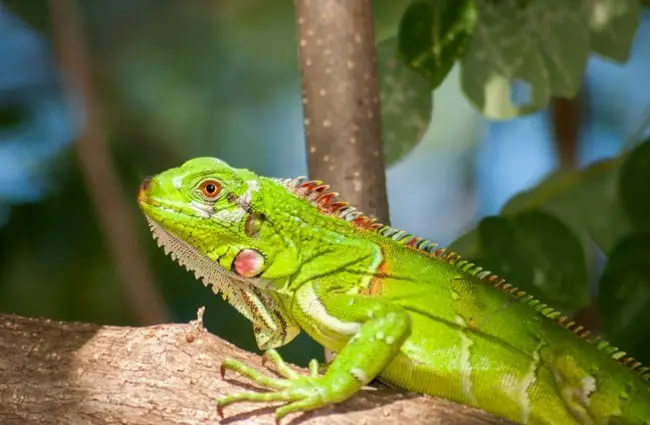


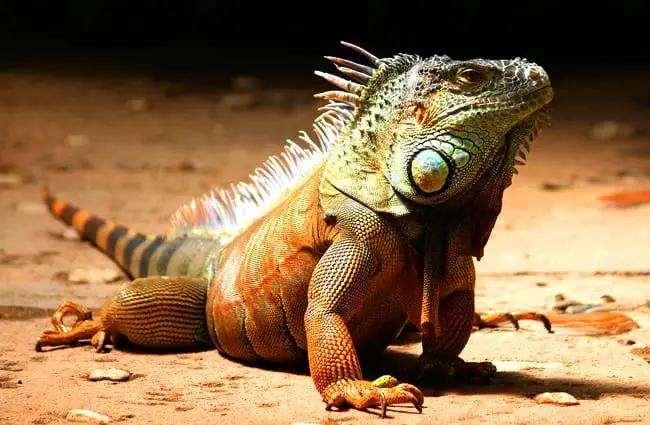

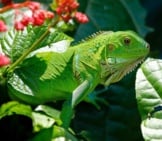
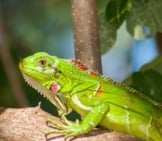
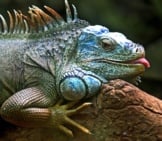
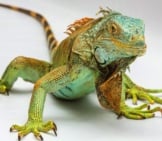
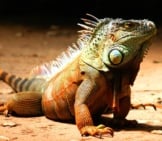
![Red Angus Closeup of a beautiful Red Angus cowPhoto by: U.S. Department of Agriculture [pubic domain]https://creativecommons.org/licenses/by/2.0/](https://animals.net/wp-content/uploads/2020/03/Red-Angus-4-238x178.jpg)












![Red Angus Closeup of a beautiful Red Angus cowPhoto by: U.S. Department of Agriculture [pubic domain]https://creativecommons.org/licenses/by/2.0/](https://animals.net/wp-content/uploads/2020/03/Red-Angus-4-100x75.jpg)

